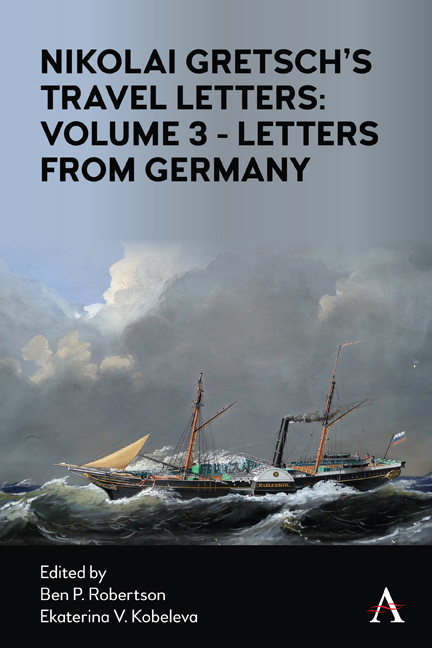Book contents
- Frontmatter
- Contents
- List of Illustrations
- Abbreviations
- Miscellaneous Frontmatter
- Introduction to Volume 3
- Letter XXXI
- Letter XXXII
- Letter XXXIII
- Letter XXXIV
- Letter XXXV
- Letter XXXVI
- Letter XXXVII
- Letter XXXVIII
- Letter XXXIX
- Letter XL
- Letter XLI
- Notes on this Translation
- Selected Bibliography
- Index
Letter XXXVIII
Published online by Cambridge University Press: 22 October 2021
- Frontmatter
- Contents
- List of Illustrations
- Abbreviations
- Miscellaneous Frontmatter
- Introduction to Volume 3
- Letter XXXI
- Letter XXXII
- Letter XXXIII
- Letter XXXIV
- Letter XXXV
- Letter XXXVI
- Letter XXXVII
- Letter XXXVIII
- Letter XXXIX
- Letter XL
- Letter XLI
- Notes on this Translation
- Selected Bibliography
- Index
Summary
The appearance of the city. Signboards. Carriages. Public promenades. Gardens—the royal and the public. The Prater. Augarten. Bastions. Residents of Vienna. Music. Dances. Ball dances. Dialect. Ranks and titles. Greetings. Schönbrunn Palace. Laxenburg. Theatres.
Vienna is the most original and most bustling city in Germany. In most streets of the city center, the lower levels of houses are occupied by flamboyant and gleaming shops. The signboards on some of them are of elegant design. They still follow the old tradition of distinguishing shops, not by number, but by some special feature. In Paris, this practice is disappearing, but in Vienna, it continues to be widely used. In the cloth and silk shop zum Primas von Ungarn, the sign-board depicts the Primate of Hungary in full regalia; the sign-board of the fashion shop zur Hofdame features a beautiful lady in a court ball dress; farther on are Hernnhuter, The Shepherd Girl, Cupid—and even the Roman Emperor!— The streets are paved quite sturdily, with natural, fine-grained stone, which is used also for tiles, snuff boxes, etc. The equipages for hire are very good: they consist of comfortable two-seater carriages drawn by one or two horses. In every carriage, there is a small mirror between the front glasses. The cabmen drive very fast. My lackey, trying to find a carriage for me one day on the Graben, was scrutinizing the numbers on them very carefully.— “Which number are you looking for?” I asked.— “Sir, I am trying to make sure I don't hire the carriage with number 308.”— “Why so?”— “The Russian emperor deigned to ride in it, and now the owner of the carriage asks riders to pay double the charge.”— “Find it for me,” I answered: “I will pay four times more.” The old man opened his eyes wide at me and then suddenly came to his senses. “Ach, ja! Sie sind ja, halt, ein Russe!” This carriage, however, was not available that day.
Vienna abounds in public promenades. Under the bastion, right in front of the imperial palace, there are two very beautiful gardens, the Hofgarten and the Volksgarten. One of the main features of the People's Garden is the Temple of Theseus, modelled on the Athenian temple, and it has the finest sculpture in it—Theseus taming the Minotaur, a work by Canova.
- Type
- Chapter
- Information
- Publisher: Anthem PressPrint publication year: 2021

